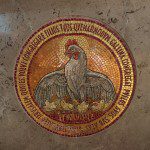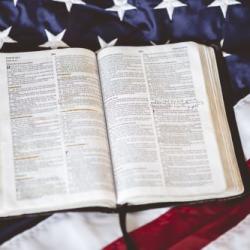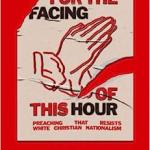Mother’s Day in the Church: Approach with Caution
I’ve been hearing from pastor colleagues urging great caution when approaching Mother’s Day in the church. We must be careful not to glorify only the image of women as mothers when there are so many other aspects of what it means to be a woman. Not all women are called to be mothers, and perpetuating harmful gender stereotypes that ignore the spectrum of sexuality and gender is never a good idea.
Also, recognizing this “holiday” runs the risk of triggering feelings of sadness and pain for those who have lost mothers lost to death, mothers in prison, mothers who have suffered miscarriage or abortion, and women who have lost children or never had children at all, to name a few. Not to mention that the relationship with mothers is complicated. Abuse, neglect, estrangement, and difficulties due to mental or physical illness are realities that defy flowery bouquets and greeting cards.
But also . . . opportunity
Yet I have found that this day offers the rare culturally acceptable opportunity to celebrate and lift up women in the Bible, the “feminine” aspects of God, and the multifaceted gifts that women bring to faith and the church. So each year I have embraced this opportunity by designing different worship services for Mother’s Day that seek to recognize the often overlooked contributions of women in religious life, scripture, and history, while also being sensitive to the concerns raised above.
For example, I put together a service recognizing Women in the Bible and invited several different women of different ages (including teens) to take part. [Email me at lschade@lextheo.edu if you’d like to receive a copy of the liturgy. The prayer litany for that service is here.] What follows is the sermon for that service.
1 Sunday vs. 51
I think if I were a man sitting in the pew today with this service celebrating Women in the Bible, I might be feeling a little uncomfortable or even exasperated. Maybe even a little annoyed.
I say this because I’m remembering the times I spent at our hunting camp in the mountains of Pennsylvania with a bunch of men. For those of you who don’t know, I used to hunt and fish and spent many weeks at our hunting camp with my father, uncle, and their friends since I was 14-years-old. And because I was the only girl in camp, the conversation almost always made its way around to some good-natured teasing about women in general. If those guys had to sit through a service like this, I could just hear them grumbling, “Women this and women that. What are we men, chopped liver?”
And I would respond to them, just as good-naturedly, “Now you know how the women feel on the other 51 Sundays of the year. Father this, and Lord that. What are we women, chopped liver?”

Why a male God?
In all seriousness, it does bring up the interesting question of why it is that God is traditionally thought of as a man. Because it wasn’t always this way. There were some ancient cultures who primarily thought of God as the Great Mother. We still have vestiges of this today. Think of the term “Mother Earth,” for example. There was an understanding that God was a female who gave birth to all the world, all plants and animals, and all human beings. And so women were held in high esteem because of their ability to give birth and nurture life.
But somewhere along the way, there was a shift. The ancient Israelites’ understanding of God was part of this shift. Remember that the people of Israel were constantly attacked by invading armies and conquering nations who drove them into slavery and exile. The thinking might have been that a nurturing Mother-God was insufficient when we’re facing an army. A strong, male warrior-God is needed for protection and victory in battle. This is one reason why we find so much masculine imagery for God in the Bible.
I wonder, however, if there might be a deeper, more visceral explanation for this shift away from the feminine. Think of what traits are typically attributed to the feminine side – softness, nurturing, expressing emotions and creativity, having compassion. Of course, men can and should express those traits as well, but the reality is that these characteristics are generally thought of as “feminine” attributes.
The Chaos of Womanhood
And there is another trait associated with the feminine that is particularly problematic – that of chaos. As a woman who has given birth, I know first-hand that pregnancy, labor and delivery are all about chaos. And any man who has patiently wallowed his way through with this process with their mate can probably recall what it was like. You never knew what to expect. One minute she’s laughing in expectant joy, the next minute she’s crying like a screaming banshee, and then she’s squeezing your hand to the bone while calling you names that I don’t dare repeat from the pulpit. All the while somehow having a clear enough head to remind you to grab the overnight bag and call the dentist to make your appointment.
Even if you’ve never gone through this with a women giving birth, you might still know what I’m talking about if you’ve spent time with a woman at least 3-5 days out of every month. Certain times of the menstrual cycle with its swirling hormones can feel like chaos for the woman and those who are interacting with her.
When you’re in the midst of chaos, there seems to be only two ways of dealing with it.
One option is to avoid it. Leave. Tune her out. Find some way to escape the overwhelming emotions that threaten to overtake you like a tidal wave.
The other option is to beat it into submission. Take away the power of the chaos by ridiculing her. Bullying her. Dominating her. Threatening her. Striking her. Raping her. Killing her.
Fight or flight. Those have seemed to be our only ways of dealing with the chaos that is part of womanhood.
(And to be clear – I realize that chaos also accompanies manhood. Testosterone has its own attending chaos that can leave incredible destruction in its wake. But this kind of chaos is generally accepted as part of “boys being boys,” and thus not demonized in the same way as women’s chaos.)
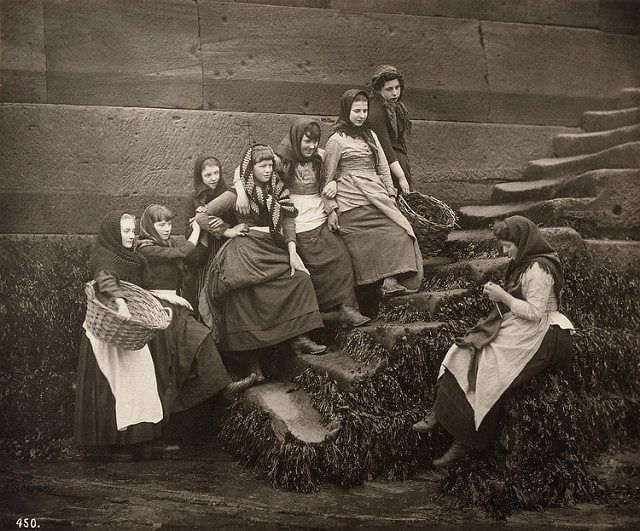
A Third Way
There is a third way to approach the chaos of womanhood. It is the more challenging way. But in the long run, it enables relationships to happen in a more healthy way. And that third way is to step into the chaos. Engage yourself in the process. Pay attention. Listen to this woman who is fearfully and wonderfully made. Be curious as to what creativeness may come out of the confusion. Join with her and open yourself to the chaos that may be giving birth to something new in you or in the world around you.
That’s what we’ve done in this service. We’ve set apart some time to listen to the voices of women who are not usually heard in the biblical story. We step into the chaos surrounding Miriam whipping the women into a frenzy of song on the banks of the Red Sea. The chaos attending Deborah on the battlefield. The chaos of Abigail’s plight, stepping between two hot-headed men ready to duke it out. The chaos of Ruth dealing with the death of her husband and distraught mother-in-law. The chaos of Esther facing a king ready to massacre her people.
And so if you’re a man or a woman in the pew this morning feeling a little like, “Whew, this is a lot to take in!” that’s perfectly understandable.
So why do we do this? Why are we focusing on women this day, intentionally lifting up the faith and witness of women?
I’ll tell you why. It’s a very simple reason.
We do it because Jesus did it.
Over and over again, Jesus stepped into the chaos of women’s lives. The list is long. The woman with non-stop menstruation for twelve years. The woman at the well. The woman with the spine affliction at the temple. The woman accused of adultery. At the home of Mary and Martha. The widow putting her offering into the plate. Mary Magdalene afflicted with seven demons.
Jesus willingly engaged these women publicly, honoring their personhood. He affirmed their worth in God’s eyes. And he healed them and ministered to them.
He even allowed himself to be taught by them and changed by them. Think of the Syrophoenecian woman who asked Jesus to heal her daughter. When he hard-heartedly replied that the “food is only for the children” (meaning the Jews), and not for the dogs (meaning her, a Gentile women), she countered in a very clever way: “But even the dogs get the scraps from the children’s table.” Stunned, Jesus declared her faith to be amazing, and her daughter was healed instantly (Matthew 15:21-28).
Not only did Jesus heal, teach and allow himself to be financially supported by women, he referred to himself using feminine imagery – like a mother hen longing to gather her chicks under her wings (Matthew 23:37). And he referred to the kingdom of God using parables about women’s work, putting yeast in bread, sweeping the house to find the lost coin, ten bridesmaids waiting for the wedding feast.
And in perhaps the most stunning act of all, he entrusted women with the news of his resurrection. Remember, Peter and the beloved disciple were both at the tomb. But it was to Mary and the women whom Jesus and the angels first gave the task of proclaiming the Good News. Which means that Jesus made women the first preachers!
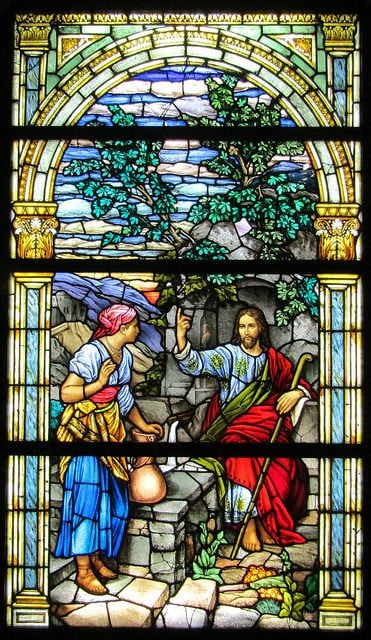
Jesus showed us that by embracing women and the feminine aspect of God, we do not emasculate the Divine. We affirm the humanity of women. And we expand our understanding of God.
Genesis tells us that God created us in God’s image. What a gift that we can celebrate the endless variety that God shows us about God’s self through each other – male and female and transgender; bodies of different sizes, shapes, abilities and colors. Wouldn’t it be interesting if we someday come to the point when there is no need to devote an entire service to the feminine faces of faith, because it will already be so integrated into our faith practices that it is just second nature?
But until that time comes, we’ll need to be intentional in our efforts to lift up the female.
So, yes, today is the day to hear the voices of the women.
To play a little with the language and the imagery in the liturgical setting. To give ourselves a break from all the masculine words and metaphors we hear every other Sunday. And to see what it feels like to call God “Mother.”
Perhaps this is the start of another shift. Not all the way back to an exclusively female god. But a shift to honoring both the male and female – and everything in between. Today we are all celebrating all of these aspects of God and humanity, giving thanks for the grace that comes to us and through us.
Amen.
Click this link for another perspective on the feminine aspect of God: Jesus – Mother Hen: This is the God I Want to Worship.
For the prayer litany used for this service, check out: Inclusive and Expansive Mother’s Day Prayers.
See also this post by my ELCA colleague, Amanda Highben: “Mothering God: A Reflection on Mother’s Day in Worship.”
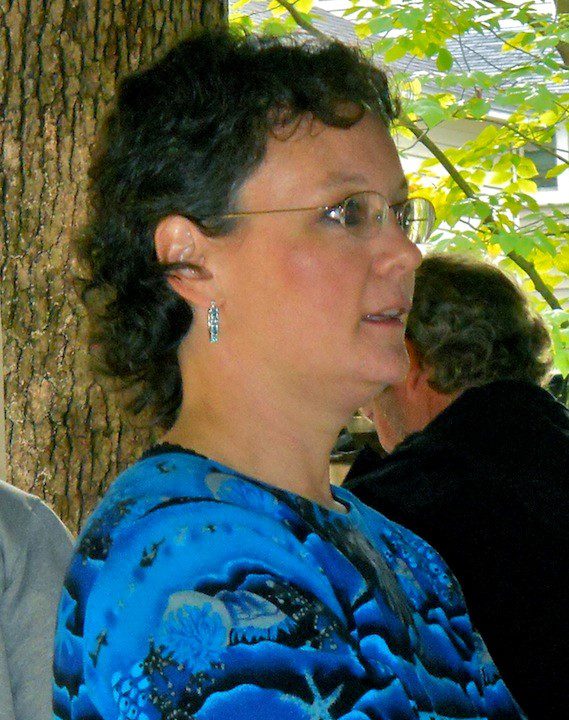 Leah D. Schade is the Assistant Professor of Preaching and Worship at Lexington Theological Seminary (Kentucky) and author of the book Creation-CrisisPreaching: Ecology, Theology, and the Pulpit (Chalice Press, 2015).
Leah D. Schade is the Assistant Professor of Preaching and Worship at Lexington Theological Seminary (Kentucky) and author of the book Creation-CrisisPreaching: Ecology, Theology, and the Pulpit (Chalice Press, 2015).
You can follow Leah on Twitter at @LeahSchade, and on Facebook at https://www.facebook.com/LeahDSchade/.
Opening photo credit: “Maman” by Denis Carrascosa; https://www.flickr.com/photos/sidcamelot/. Public domain.
For more of Leah’s posts on women and religion, feminism, and gender, check out these links:
Top 10 Things Never to Say to Your Female Pastor
#MeToo, #ChurchToo: The Church is Facing the Truth About Its Sexism
7 Ways Your Church Can Support Your Female Pastor
Words of Advice for Good Men: #MeToo Meet #YouToo
Book Review: Preaching the Women of the Old Testament



